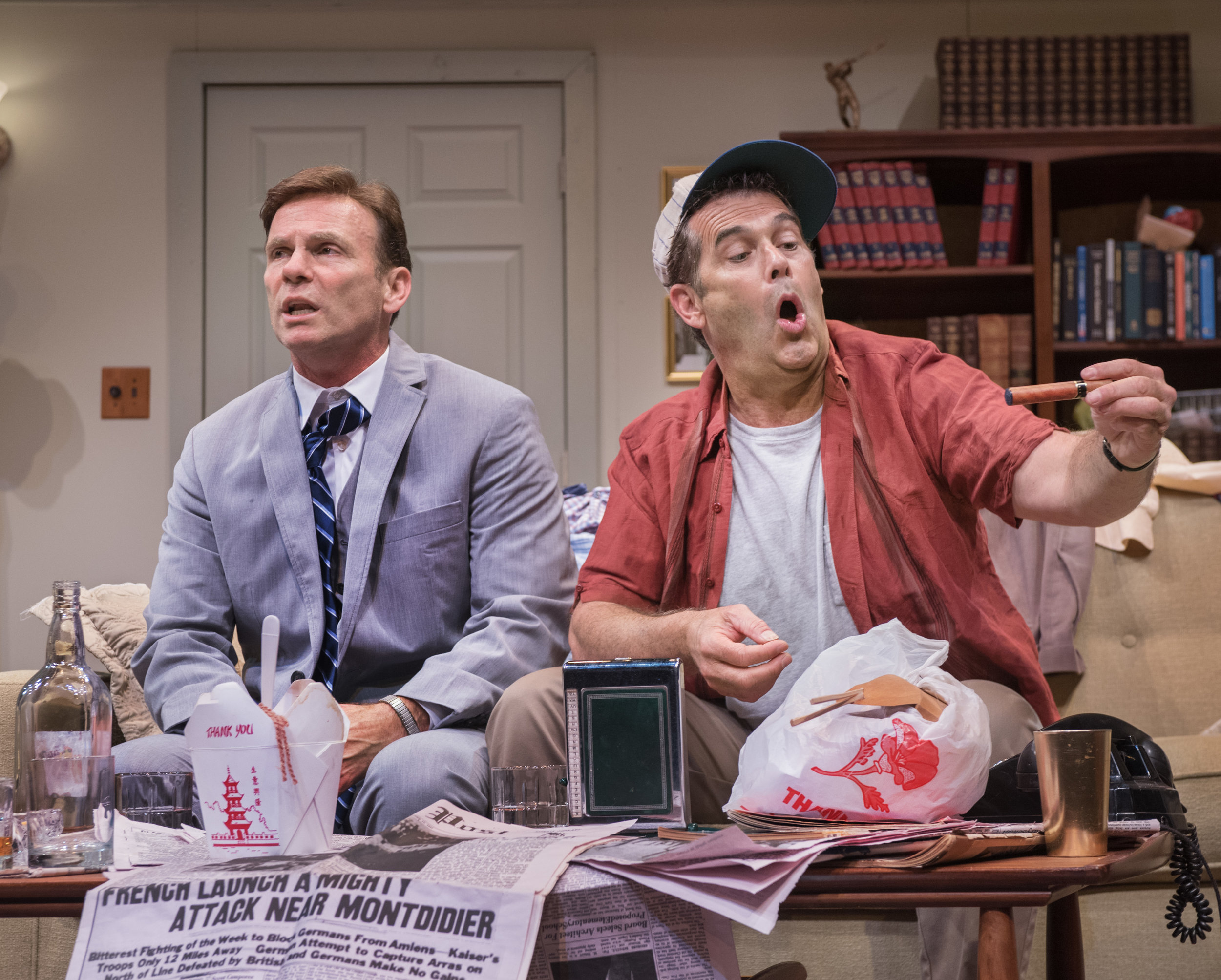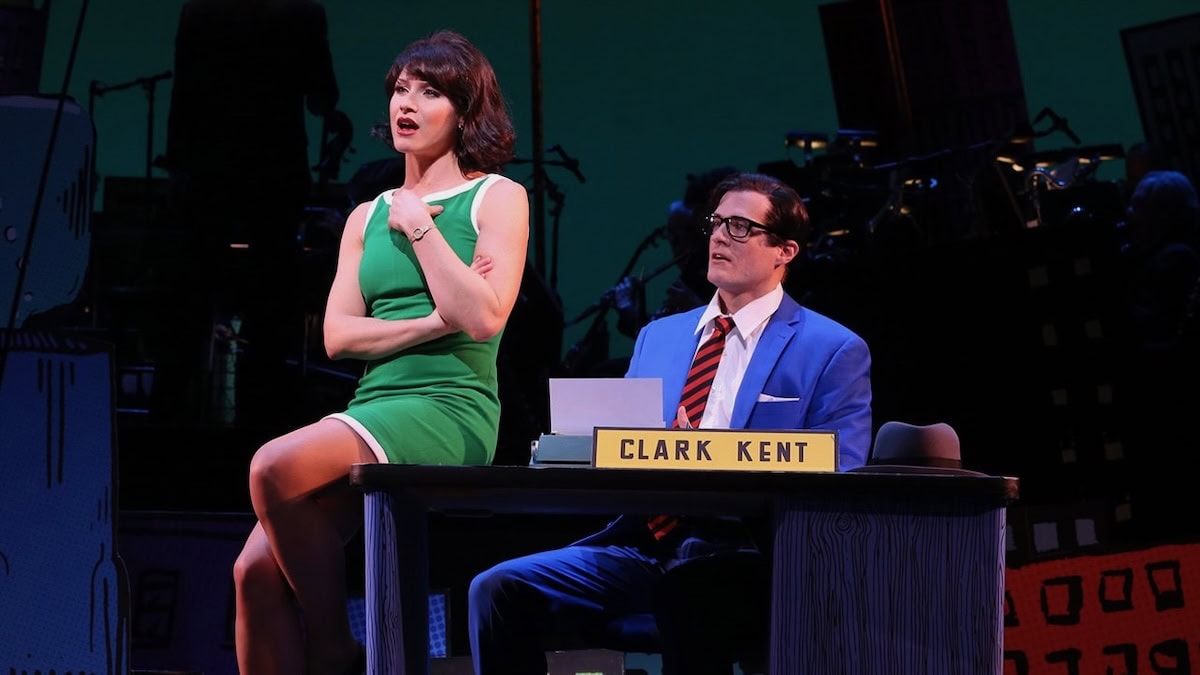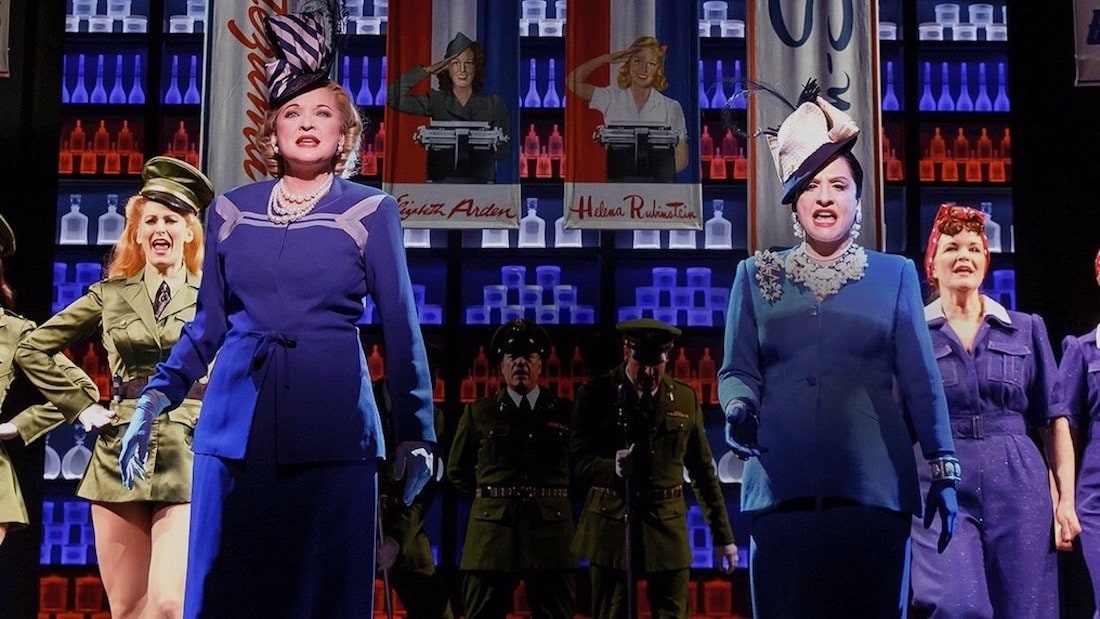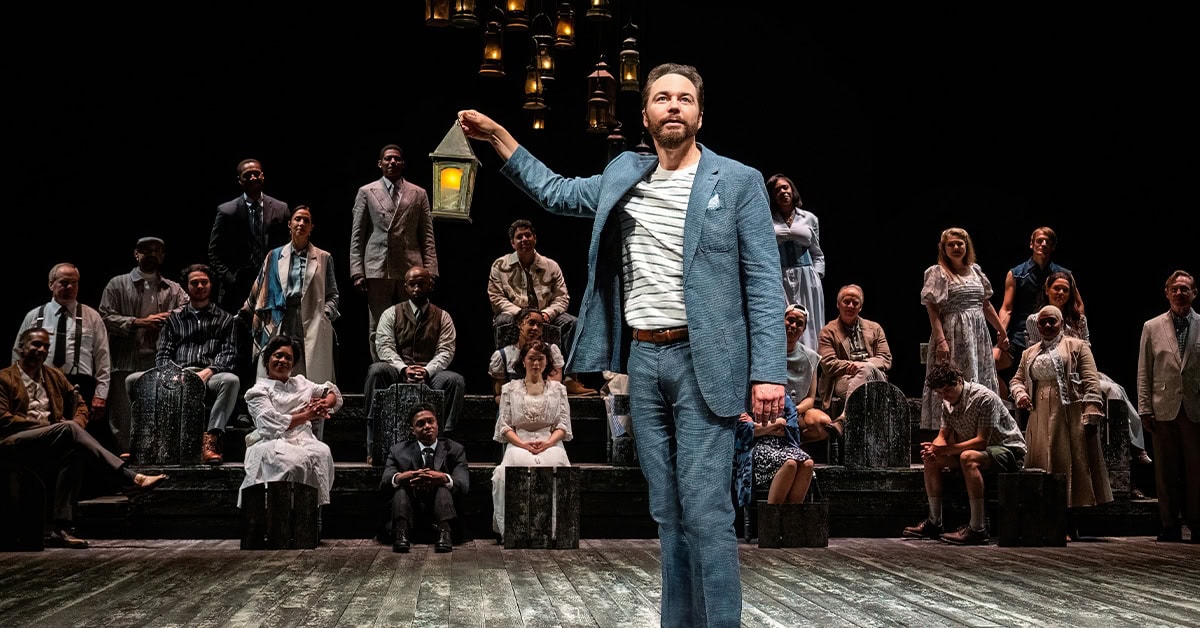
How do Neil Simon’s comedies, with their white, mostly middle-class, mostly urban New York Jewish characters, continue to draw audiences across the globe? Why do they hold up for decades after they were written, with nine of his plays surpassing the half-century mark?
We asked ourselves these questions at Jewel Theatre when we designated The Odd Couple to close our 2017/2018 season. For Artistic Director Julie James and director Steve Muterspaugh, the comedy had to naturally emerge from the situation, or more accurately, the dilemma. “It is always a dilemma, not a situation,” Simon has said of writing character-driven comedy. The characters would be funny, or tragic, or funny-tragic (“laughing through tears” is a noted audience response to Simon’s plays) not because their lines were funny, but because of how committed they were to one another and to truthfully living the circumstances of the play. The actors wouldn’t be “telling” the audience where to laugh, but allowing the audience to come to the play on their own terms and to choose the humor that was relevant to them in the current time. After all, people are funny for the same reasons, no matter when or where they live, the language they speak, the color of their skin or their current politics. As Julius Novick wrote for the Village Voice in 1970, Neil Simon “speaks directly and meaningfully to his audience of the urgent needs and desires and problems that they confront in their own lives.” The humor is a byproduct: Simon told John Lahr in a 2010 interview for The New Yorker, “I find that what is most poignant is often most funny.”
Still, how would the audiences of the #MeToo and #ItsTime era respond to the portrayal of women and relationships in the play? The liberating effects of the pill, illegal in New York until 1965, had not yet permeated the culture. The men of The Odd Couple depended on their wives to take care of them—that’s what women did in the early sixties. The Pigeon sisters, potential love interests whose surname evokes the “bird” diminutive for women at the time, fully embraced their expected role. Though divorce carried a stigma of failure, lack of character and immorality, the married males in the play envy the unmarried characters’ freedom “to go to the Playboy Club to hunt Bunnies.”
It was important to Steve and Julie that the prevailing attitudes of the time—divorce as anathema and women as birds, Bunnies and caretakers of men—were integrated authentically into the actors’ character development. A strong connection to the character’s inner life, including their points of reference, would replace hindsight judgment, and hopefully bypass judgment from the audience, too. To that end, Steve asked me to provide additional dramaturgy documents to supplement the comprehensive glossary that I normally prepare for the cast and creative team. He requested a timeline of cultural, political and social events that shaped people’s lives then, as well as papers on divorce and the characters’ occupations. He even wanted a history of the Brooklyn Dodgers! This information was also included in audience guides, and discussed in audience talkbacks and a dramaturgy presentation.
Providing context for the time of the play led to an understanding of the universality at its core and its adaptability to any era. The key was authenticity: to the era of the play, to the characters and their problems, and to the playwright’s intentions. Julie and Steve wanted the physical confines of the play to provide context for the social confines. The set, costume and properties designers paid meticulous attention to the details that would communicate authenticity to the audience. The cast, particularly the actors playing Felix and Oscar, were chosen for their reputations as straightforward and real. They would need those qualities to authenticate the pain of divorce and the honest efforts of the characters to make the situation better. The men weren’t just a cadre of poker players, but true friends with a genuine love and concern for one another. The comedy would derive from their wholehearted investment in the world of the play.
As for the playwright’s intentions, I expect he would have appreciated our focus on authenticity. His basic rule of comedy, “Never try to make comedy funny. Honesty will do nicely, thank you,” informed our choices. In the aforementioned article for The New Yorker, John Lahr wrote, “Simon has always felt that every play he writes is a drama with ‘comic moments.’” Simon reasoned in the first of his autobiographies, “If it’s mixed in life, why can’t you do it in a play?” Even The Odd Couple’s premise derives from actual circumstances: Neil’s brother Danny, his writing partner for the first part of his career, was the model for Felix. Danny’s friend Roy Gerber, a theatrical agent, was a real-life Oscar. Danny moved in with Roy after their respective divorces, and their squabbles centered around the same problems they had in their marriages: Danny’s over-exacting ways and Roy’s slovenly, irresponsible ones.
Simon recalled in his autobiography that when directing Barefoot in the Park, Mike Nichols wouldn’t let the play veer towards getting laughs, instead admonishing the actors, “Who told you this is a comedy? We’re doing King Lear here.” Doing it “with the intensity of Lear,” Simon remarked, “is exactly what made it so funny.” There were very few laughs during rehearsals, as the actors were too involved with connecting with their characters and the truth of the play.
Simon told Lahr in 2010 that he often noticed audiences sighing in recognition at certain lines in his plays. “You’d hear an ‘aah’ from the audience, a sound of ‘My God, that’s me. That’s me, that’s you, that’s Uncle Joe, that’s Pop.’” He observed in a 1979 Playboy interview, “When people care, even the slightest joke will get a big laugh, for they’ll be so caught up in what’s going on. If they don’t care and are not caught up, you need blockbusters every two minutes and even that won’t fulfill an audience.”
I hope we did him proud. When I research a playwright, I often find something close to awe for their gift. Perhaps it was the nature of his work, or the vulnerability and pain that he wrote about so candidly in his autobiographies, but Neil Simon was one of the few who also touched my heart. Two months and two days after our closing performance of The Odd Couple, Neil Simon died. Harvey Fierstein wrote, “Neil Simon – gone! He could write a joke that would make you laugh, define the character, the situation, and even the world’s problems.” Dan Rather, a longtime fan, spoke for so many of us when he said, “Another voice who understood the power of art in our American story now belongs to eternity.”
…
To purchase your copy of The Odd Couple, click here. For performance rights, click here.
(photo: Steve DiBartolomeo)

Shows from the Comics

The Truth Behind… War Paint

